Viewed from the Earth, the apparent path of the Sun around the Earth is called the ecliptic (the yellow line in figure 1). This ecliptic is divided into 12 imaginary equal divisions called zodiac signs, which start with Aries. As the ecliptic resembles a circle and a circle has no starting point, where to start the first segment? Therein lies the catch. The definition of the starting point differs for sidereal and tropical zodiacs. The difference between these starting points is represented by ayanamsa. But first, the basics.
Table of Contents
Sidereal zodiac
If the starting point of Aries is defined by the constellation of stars (nakshatras) in the sky, the zodiac is sidereal. The sidereal zodiac in Indian astrology starts with the Ashvini nakshatra, as shown in figure 2. The blue line represents the starry sky in the background of the zodiac signs as seen from the Earth.
Nakshatras
Per Shri Jaggi vasudev of Isha, the yogic science divides the ecliptic into 27 equal segments called nakshatras (figure 2). Nakshatras do not seem to be defined by the constellations of stars in the sky, as the constellations of stars along the ecliptic are of different length and are actually 13 (or more) in number, including Ophiuchus. Figure 3 depicts the constellations of Virgo, Libra, Ophiuchus, Scorpius, and sagittarius in the starry sky. The yellow line is the ecliptic.
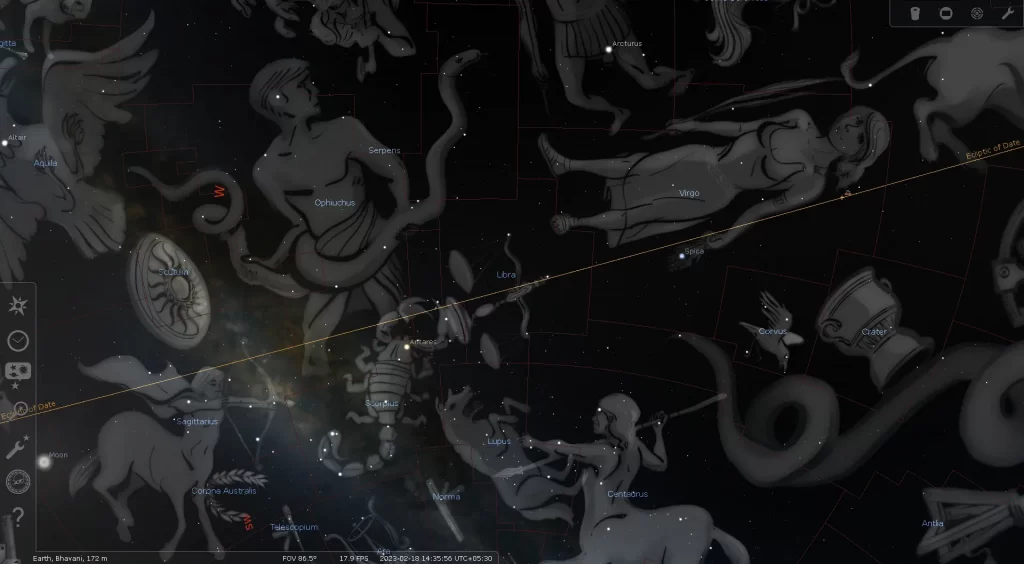
Each nakshatra is further divided into 4 equal parts (padas or quarters), totalling 108 padas (27 × 4; figure 2). The number 108 holds esoteric significance in Hinduism and yogic science. Therefore, the nakshatras are definitely 27 in number, of equal length, and not defined by the constellation of stars. Each nakshatra has a prominent star or a junction star (yogatara).
The span of a nakshatra is 13° 20′ (obtained by diving a 360° circle into 27 parts). As 108 padas are divided among 12 zodiac signs, each zodiac sign comprises 9 padas (2 nakshatras and 1 pada). The Indian sidereal Aries comprises Ashvini and Bharani nakshatras and the first pada/quarter of the Kṛttikā nakshatra, as can be ascertained from Figure 2.
Tropical zodiac
If the starting point of Aries is defined by the apparent movement of the Sun around the Earth, the zodiac is tropical. The starting point of Aries coincides with the March equinox (figure 1), which keeps drifting every year with respect to the starry background (the precession of the equinoxes).
That saptarishis used tropical zodiac with sidereal nakshatras has been established in another article.
At present, the march equinox and, therefore, the starting point of Aries coincides with the Uttara Bhadrapada nakshatra (figure 4).
Ayanamsa
If you look closely at the above illustration, you can see that the tropical Aries has drifted off from the start of Ashvini nakshatra by quite a few degrees. This difference is called ayanamsa and denotes the precession of the equinoxes. This represents the divergence between sidereal and tropical zodiac. But Indian astrologers are not sure of the starting point of the Ashvini nakshatra, and various astrologers define it as they desire. There is no consensus among the astrologers, and many ayanamsas are being used to compute horoscopes, such as Lahiri ayanamsa, Raman ayanamsa, Fagan/Bradley ayanamsha, etc.
Now, since the tropical zodiac does not use nakshatras to define the starting point, no ayanamsa is needed to chart a horoscope. Clear. But, Indian astrology places prime importance on the nakshatras. The nakshatra behind the Moon on the starry sky (as visualized from the Earth) is the birth nakshatra of a jataka (the person for whom a horoscope is erected).
Suppose, if the Moon is visualized against the backdrop of the Pleiades (Kṛttikā) as depicted in figure 5, the jataka’s birth nakshatra is Kṛttikā. The Pleiades is the cluster of (6) stars visible just above the Moon. The proposed ayanamsa should place the Moon in the Kṛttikā nakshatra in the horoscope and nowhere else. Aldebaran, visible in the image, corresponds to the Rohinī nakshatra. So Mars, for example, should be placed in the Rohinī nakshatra in the horoscope. So the proposed ayanamsa should confirm the observed placement of planets as visualized in the sky at night. The Lahiri ayanamsa does place the Moon and Mars in the correct nakshatras in the depicted screenshot.
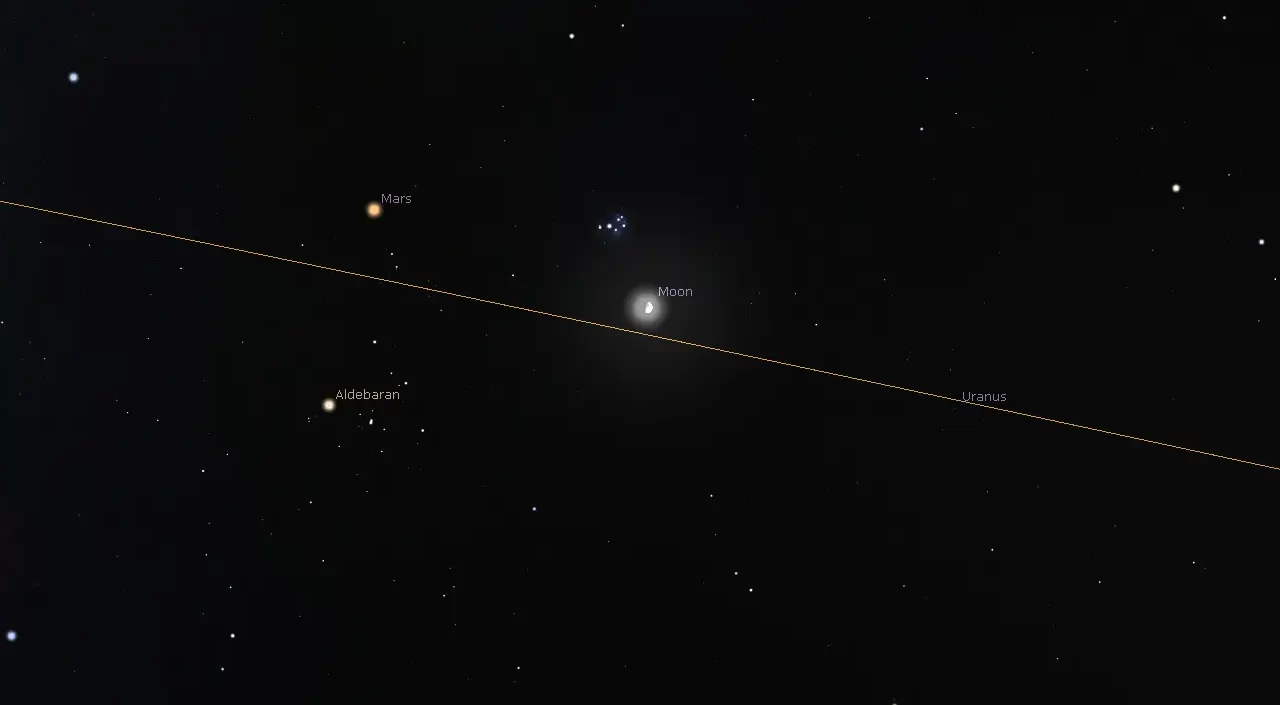
Vimshottari dasa and the need for ayanamsa
The Vimshottari dasa system utilizes the birth nakshatra to calculate the timings of major events in the life of the jataka. It calculates the major periods of influence (mahadasa) of the 9 planets, which is further divided into subperiods. Therefore, it is important to define the boundaries of the 27 nakshatras. Once the starting point of any nakshatra is defined, the rest of the nakshatras can be delineated. But here, again, the problem arises. As we saw earlier, Indian astrologers have not arrived at a consensus on the starting point of Aries, and by extension, the boundaries of the 27 nakshatras. It seems one cannot escape this vexing problem of ayanamsa, whether he uses the sidereal or tropical zodiac in Indian astrology.
A few readers once asked me the choice of ayanamsa to be used with the tropical zodiac, in the comments. I, then, answered that no ayanamsa is needed to compute the position of planets in the tropical zodiac. So far, so good. But one needs to decipher the boundaries of the nakshatras and therefore requires an ayanamsa to define the starting point of a nakshatra (by default, Ashvini).
Jagannatha Hora
Jagannatha Hora (JH) software gives an option to compute horoscopes using tropical zodiac with sidereal nakshatras. It defines the boundaries of the nakshatras by fixing the Spica Star at the middle of the Chitra Nakshatra. As one reader emphasized, JH uses, by default, the Lahiri ayanamsa (actually, a bit modified one). Unfortunately, JH does not provide any option to vary the nakshatra boundaries without changing the starting point of the (tropical) zodiac.
Let me clarify the above statement. In tropical zodiac, no ayanamsa is needed to define the zodiac. Period. But ayanamsa is needed to define the boundaries of the nakshatras (and nakshatras alone) and not the zodiac. The software should be so designed that any change in ayanamsa should not shift the planets in the zodiac but shift only the boundaries of the nakshatras. JH does not provide that option, as of now.
Kala provides the option for using any ayanamsa
Kala is a vedic astrology software that provides the option to calculate tropical rasis with any ayanamsa or custom ayanamsa for nakshatra purposes. A demo version of Kala software is also available to explore its features.
Choosing the right ayanamsa
As the birth nakshatra determines the timing of life events, a slight shift in the boundaries of the nakshatras (ayanamsa) profoundly shifts the mahadasa periods. A change in ayanamsa shifts the dasa periods, even though the position of the planets in the tropical zodiac remains the same.
In my comments, I then wrote that no ayanamsa is needed to use tropical zodiac with sidereal nakshatras. I thought that the default ayanamsa used by JH should suffice and no changes are warranted. Now, I stand corrected. I found that the nakshatra boundaries, as defined by the default ayanamsa used in JH for tropical zodiac, is not correct; the mahadasa periods do not correlate with life events.
So, back to the question. Do we need an ayanamsa when using tropical zodiac with sidereal nakshatras? Yes. But only to define the boundaries of the nakshatras.
Unfortunately, defining the boundaries of the nakshatras is a daunting task. During the course of my quest, I came across sculptures depicting the shapes of the nakshatras in one of the temples in Tamilnadu. I realized that it does not correlate with Lahiri ayanamsa or any other defined ayanamsas. The start of Aries is very close to the star Revati (ζ Piscium). Although I have zeroed in on an experimental ayanamsa that correlates with life events, further confirmations are warranted.
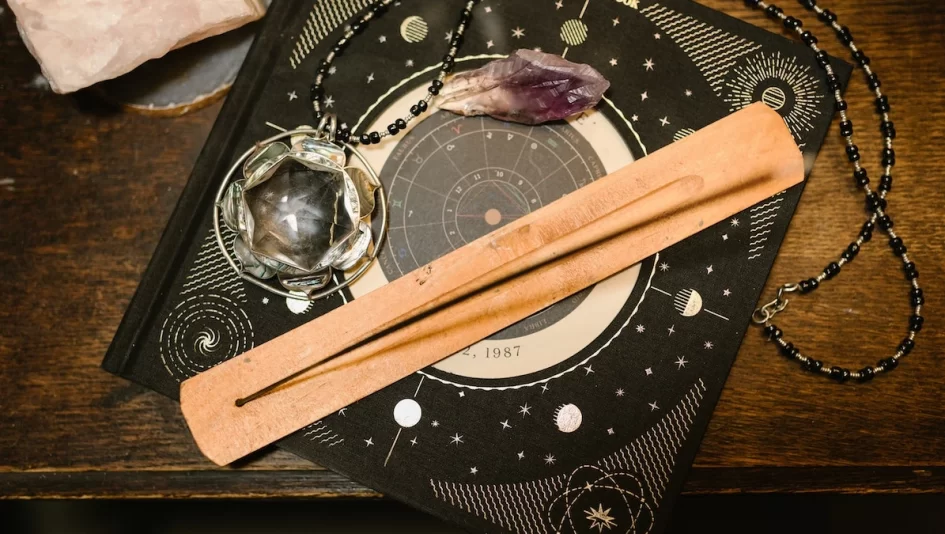
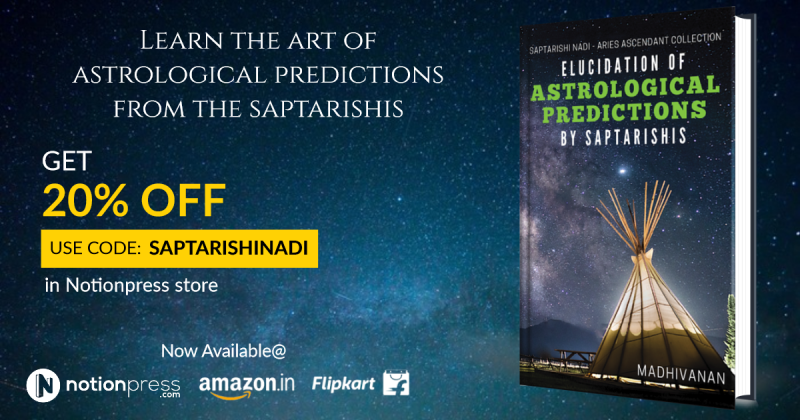
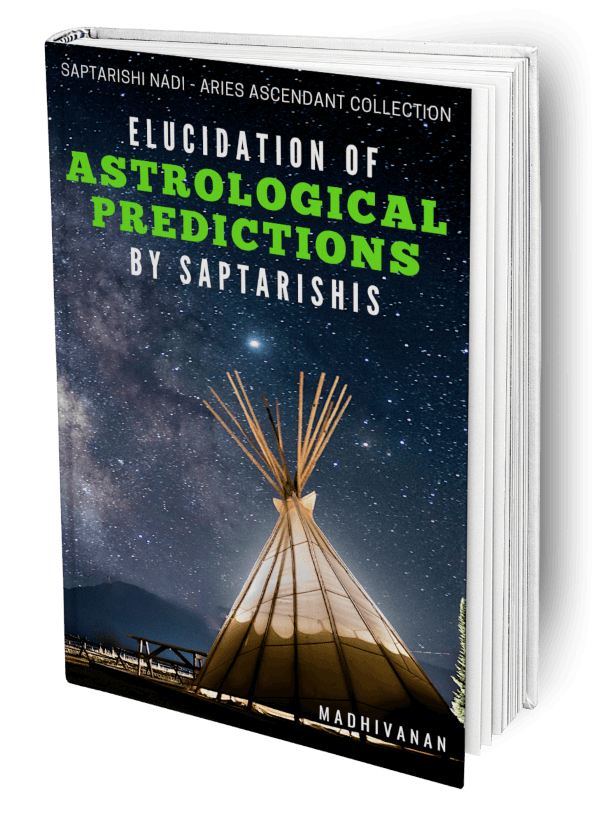
May 25, 2023 at 11:47 am
Sir, Jhoro software author PVR Narasimha rao in youtube video titled “Ayanamsa Controversy” explains why NC lahiri based on Chitra Nakshatra is wrong and why Pushya paksha is correct and very close to BV Raman, Yukteshwar etc. It seems very logical as great Astrologer BV Raman could not have gone wrong.
May 25, 2023 at 2:11 pm
எப்பொருள் யார்யார்வாய்க் கேட்பினும் அப்பொருள்
மெய்ப்பொருள் காண்ப தறிவு.
Translation: To discern the truth in every thing, by whomsoever spoken, is wisdom.
October 6, 2023 at 6:07 pm
வணக்கம். தற்செயலாக இந்தக் கட்டுரையை கண்டேன். உங்களுடன் இந்தக் காணொளியைப் பகிர விழைகிறேன். https://www.youtube.com/live/_gnXiyy-1mk